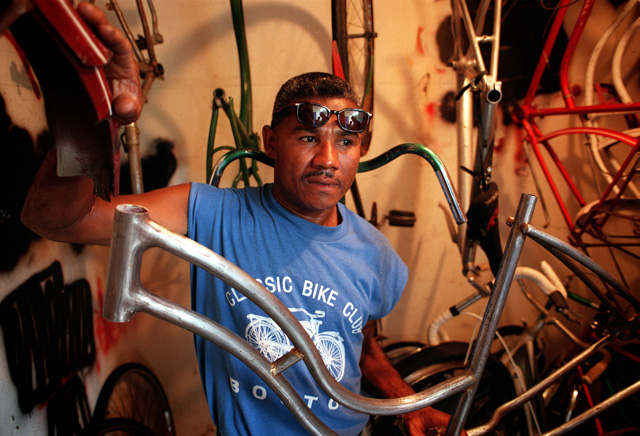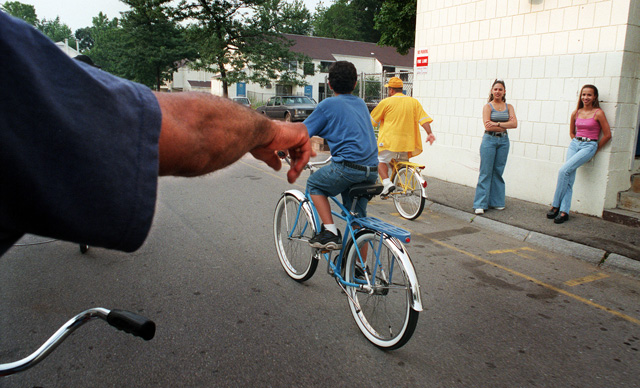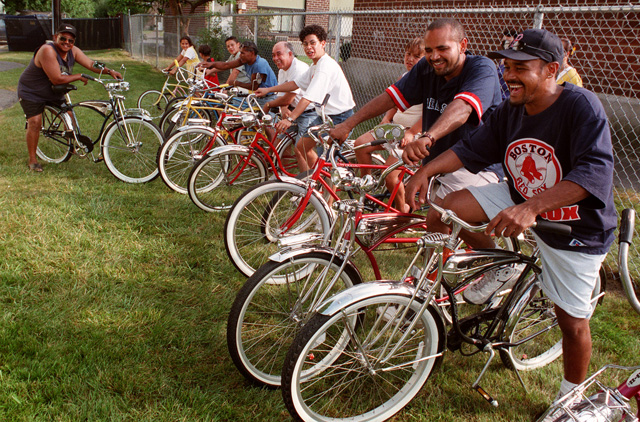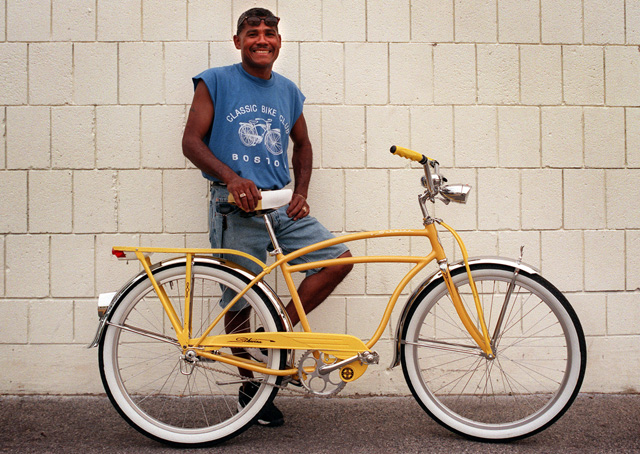For 2011, Tell Stories That Matter
Citizen journalism.
This isn’t the first time that phrase has slithered out of my fingers and, unfortunately, I’m sure it won’t be the last. But it’s a phrase I want to start with because there are a lot of people decrying the future of my profession and using that as the excuse.
Those who have read me, listened to me or attended conferences or workshops I’ve put together will find nothing new in this New Year’s rant. I hate that phrase.
And I hate the assumption that goes along with it–that what we do doesn’t matter, isn’t valuable and can be easily replaced by someone toting along their camera when news happens.
Which is true–look at the London subway bombings a few years back when the only images available were shot be tube riders on their cell phones. Look, even, at some of the images Time magazine has declared to be the best of this recently completed year. Technology has gotten to the point where the average person, if they’re in the right place at the right time, has just as good a chance of getting a newsworthy, communicative images as my peers and I did 15 years ago.
I’ll even accept part of what Fred Ritchin wrote on After Photography:
Photography of news continues to evolve into a photography better done by amateurs than professionals, given that there are many more amateurs with cameras walking around at all times.
But also what David Guttenfelder of the Associated Press said about his iPhone photos from the current war:
Afghanistan, the front lines of a war, is one of the few remaining places that the public, with its consumer camera phones, does not go.
Ahhh … and there’s the crux of it for me. As journalists–print, photo, radio, broadcast, online or all of the above–we go. When breaking news happens in a crowded place, the people there are going to be better able to capture those moments.
But when it’s not breaking news, when it isn’t splashy, when it’s a story that takes place outside of the common areas of our lives … who is going to shoot that?

Let me tell you a story … in 1998 I was sent to a local shop to get a photo of a recently introduced “retro” Schwinn bike. It had all the stylings of a 1940s bicycle–lots of chrome, swoopy frame, even a few art deco touches. The owner of the shop asked me why I cared about this bike, why we were doing this story. (An odd thing to ask seeing as how he was the only one carrying it at the time.)
He asked, if we cared about vintage bikes, why didn’t we do a story about Howie Colon?
Who the heck is Howie Colon?

Colon, the owner said, is a guy up on Interfaith Terrace who restores original Schwinn bikes … and gives them to kids in the neighborhood.
Uh … hrmm … thank you for your time, I have to go.
I called a reporter I trusted, picked him up and we headed into the evening light and cinderblock buildings of Interfaith Terrace, a neighborhood we’d only reported on for shootings, stabbings and prostitution as far as I could recall. As we slowly drove through the potholed streets, we saw a kid on a gorgeous candy apple red bike. Then another … and another.

We found Colon, who worked in a dry cleaning store by day and spent nights and weekends searching through scrapyards and garage sales, looking for parts. When he finished a bike, a bike like those he grew up with in Cuba, he gave it away. The neighborhood was awash in meticulously restored vintage bikes.
We did the story for our paper. We sent it out on the wire and it ran all over the place. We told a story about our community that mattered. It wasn’t splashy, it wasn’t sexy and it wasn’t violent. We told that story because it mattered to our community, because it helped our readers–and us– better understand our world.
And that’s the power of journalism. It’s not about explosions, flames or smoke. It’s about understanding our community so we can be involved in it.
Sitting at my desk, I can look around and see half a dozen cameras of various types–Canon DSLRS, a Canon point and shoot, a cool little Olympus micro 4/3 that I’m shooting with every day and, of course, my cell phone. All of them, when pointed at a major news event, will make a good photo, maybe even a photo that helps tell a story.
But not one of them, in the hands of my doctor or contractor of kid’s teacher, would ever tell Colon’s story.
I am okay with the camera manufacturers who have advanced the state of the art so far that almost everyone can make a good photo. And I won’t even bring up this Karl Marx line in a snarky way:
Catch a man a fish, and you can sell it to him. Teach a man to fish, and you ruin a wonderful business opportunity.
As a working photojournalist and photo editor, I was unlike so many of my peers in that I didn’t care about spot news. I did it, because it was part of the job, but as an editor I tried to cut down on the number of bent cars and flame-filled skies we ran in the paper. Most of them were isolated incidents, momentary distractions that people talked about over coffee and then forgot.
Because those photos, those stories, really didn’t matter. Unless it was an ongoing problem–a bad intersection, an arson problem–they didn’t have a real impact on the community for more than a few hours.
So what do we do? I think we do what we should have been doing all along–we tell stories that matter. We don’t go for the quick hit, easy, splashy, graphic things. We use our expertise to tell stories that matter.
Is there a place for “citizen journalism” in this new journalism era? Absolutely. Take it in, use it to fill out space or flush out understanding. But because it is done by amateurs, because it is generally done by people who are only interested in that one story, it will never give you a complete, coherent understanding of your community.
I worked for one of the big chains where, once you reached a certain level, the only way to move up was to have awards on your shelf. With a couple of editors who needed more awards to move up, we did lots of Special Projects. Those start on Sunday, run through Wednesday deep looks into one particular issue.
And, well … they were good, I suppose. But when the call came to renew the subscription, most of our readers weren’t thinking about that big Sunday centerpiece from two weeks ago. They looked down on their kitchen table and saw that day’s paper and asked themselves this question: Was there anything in today’s issue I needed?
Unfortunately, a lot of readers, all across the country, have answered no. They didn’t need the photo of a body under a white sheet. They didn’t need the photo of a kid in a sprinkler. Because neither of those extremes really told them anything about their community, anything they could use to help make it better.
So, one last time, make a 2011 New Years resolution with me: Let us tell stories that matter.

1 Response